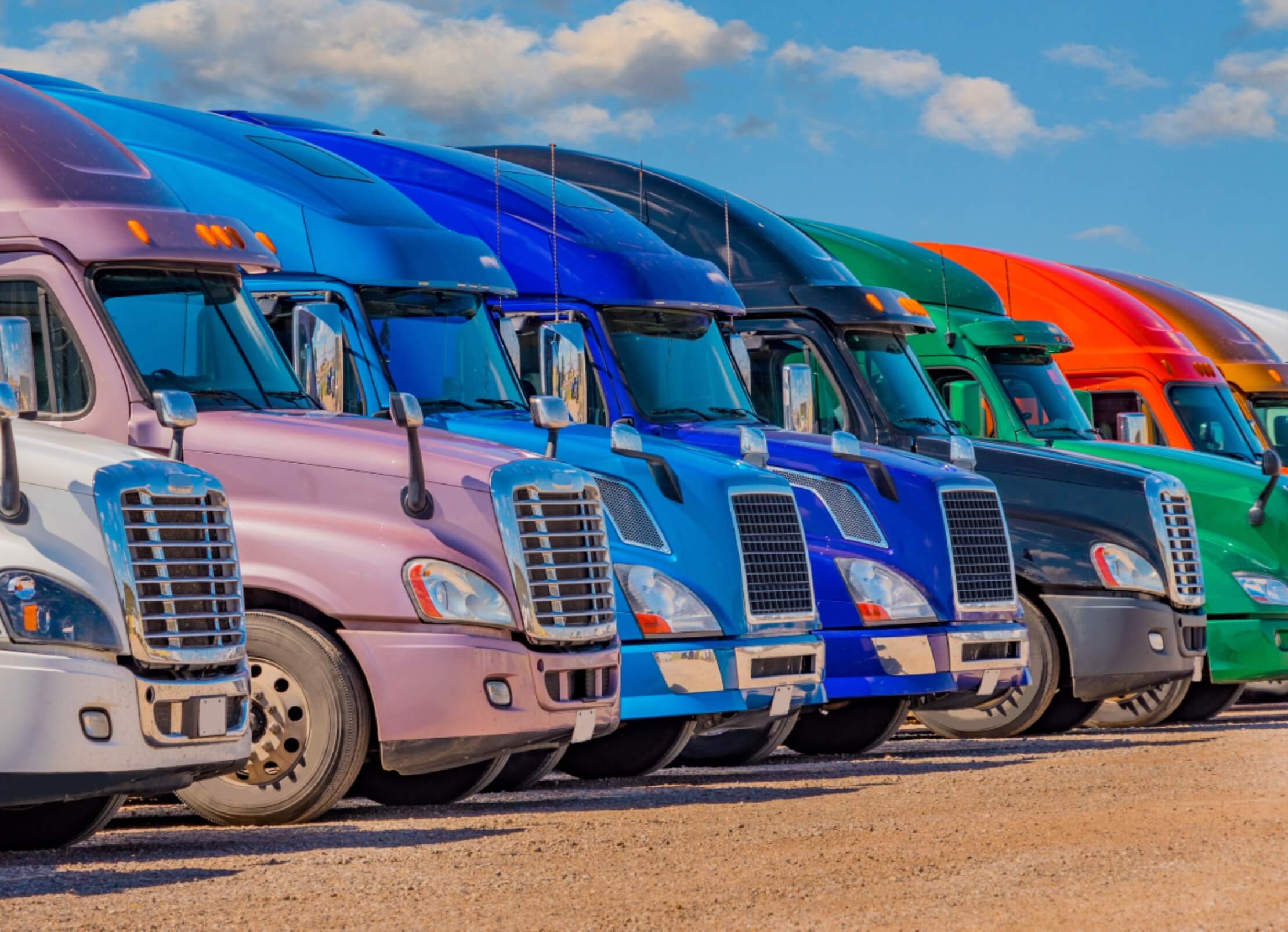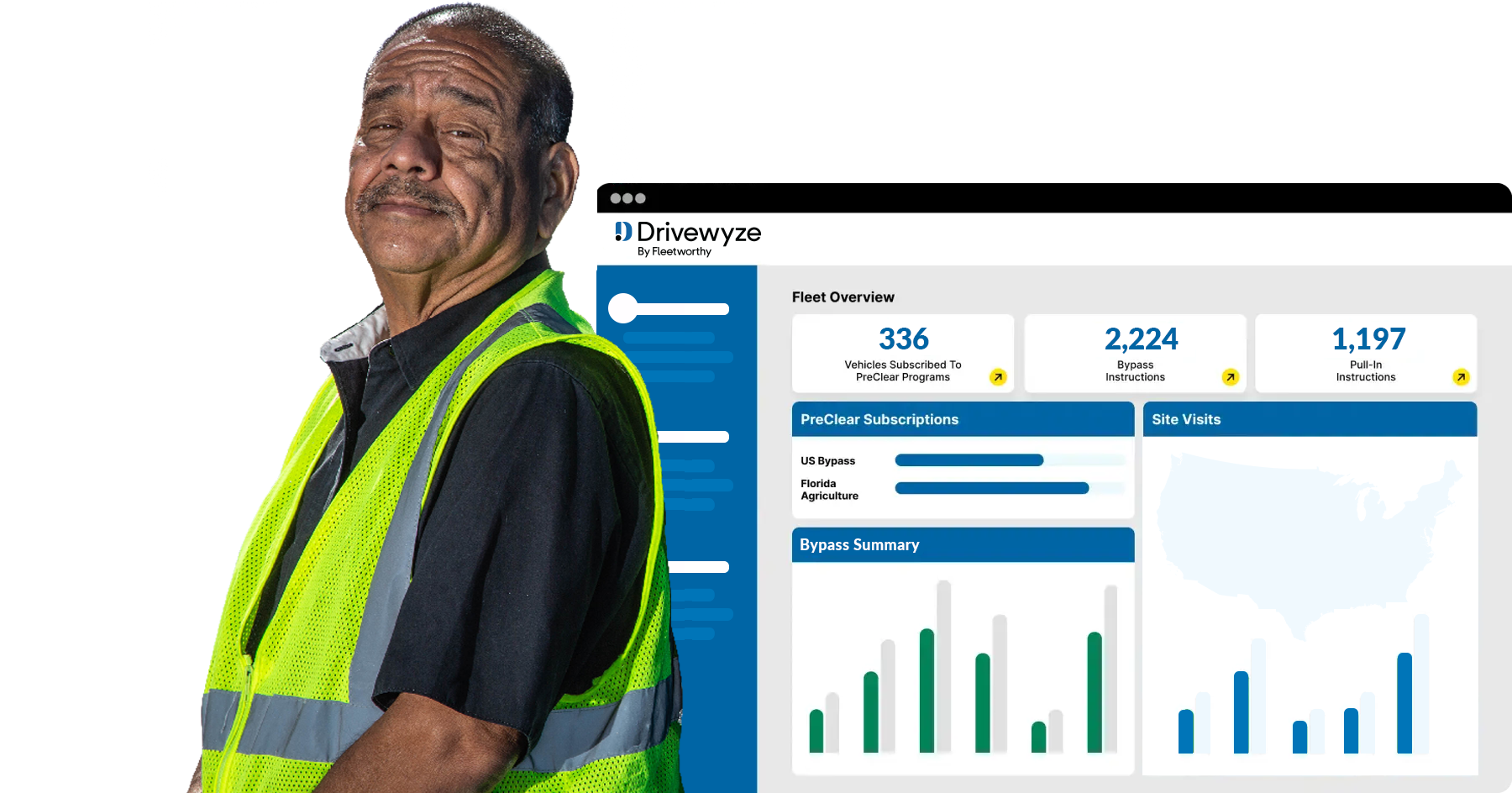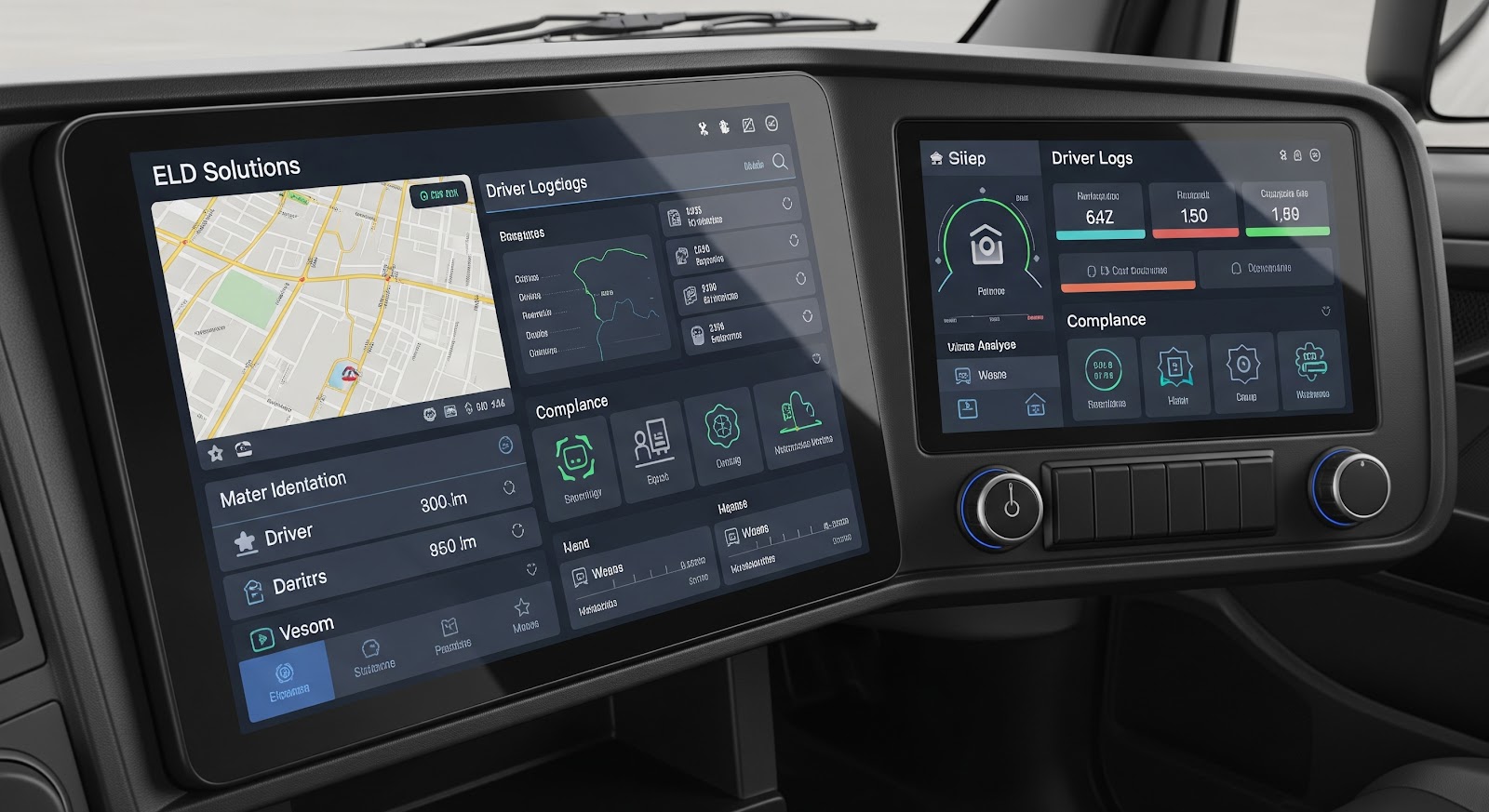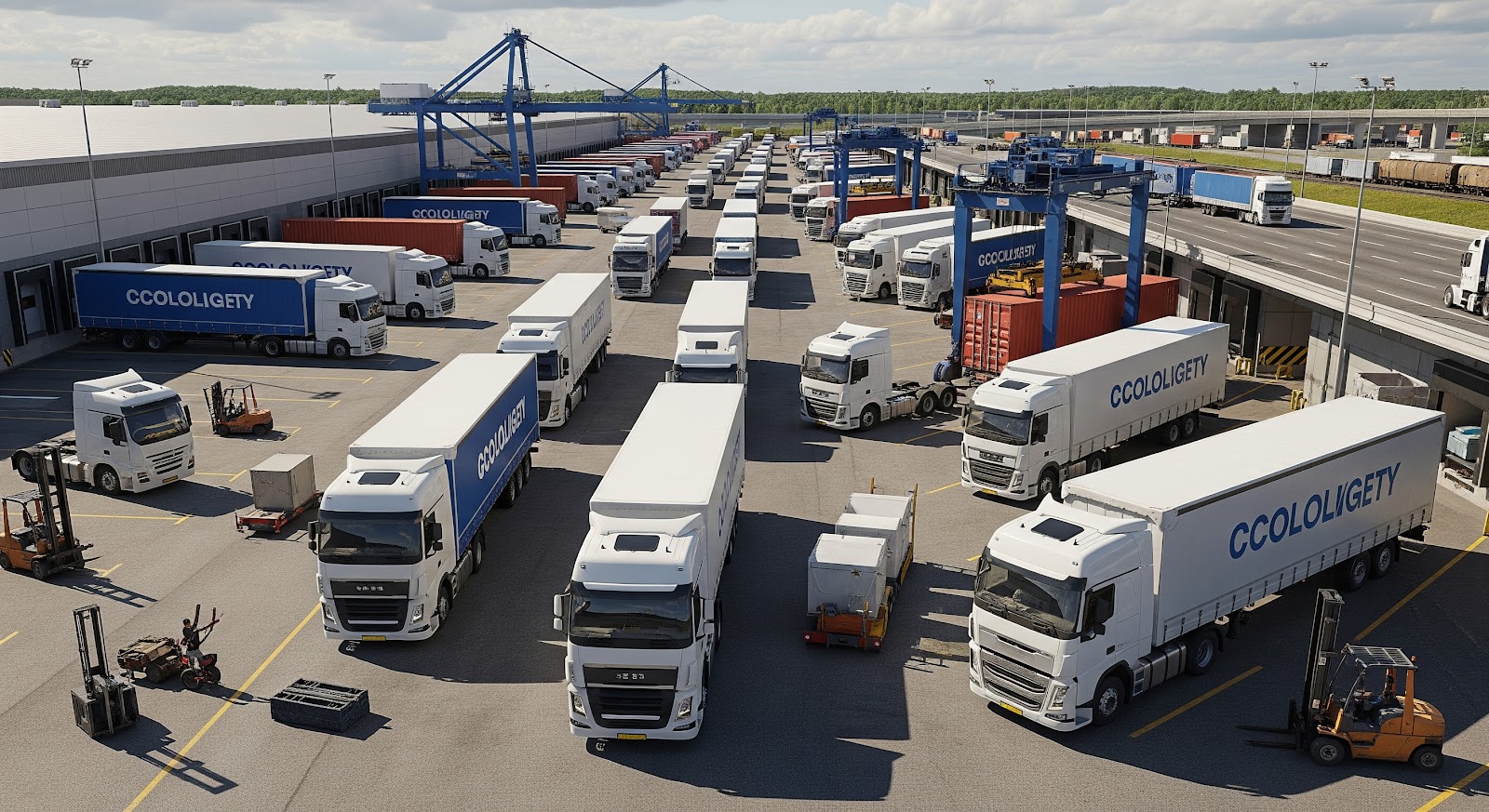Before the ELD mandate, fleets relied on paper logbooks or manual e-logs, which were not only time-consuming but also more prone to error or manipulation. The transition to ELDs standardized HOS tracking and brought new levels of transparency and automation to daily operations.
But not all ELD solutions are created equal. Today’s market is saturated with options that range from basic compliance tools to advanced platforms offering real-time data insights, safety analytics, and integration capabilities. Choosing the right ELD solution is no longer just about ticking a compliance box—it’s about selecting a system that aligns with your fleet’s goals for driver safety, regulatory compliance, operational efficiency, and long-term scalability.
From reducing administrative burdens to enabling proactive driver coaching and streamlining inspections, the right ELD solution becomes more than a legal requirement—it becomes a strategic asset.
What Are ELD Solutions?
At its core, an ELD (Electronic Logging Device) is a federally mandated technology that automatically records a commercial driver’s Hours of Service (HOS). Connected directly to a vehicle’s engine control module (ECM), the device captures driving time and duty status changes to ensure compliance with FMCSA regulations—helping fleets avoid violations and improve road safety.
But today’s ELD solutions go far beyond basic HOS tracking.
Key Functions of ELD Solutions:
- Automatic HOS Logging – Tracks drive time, on-duty/off-duty status, rest breaks, and supports compliance with federal HOS rules.
- GPS Tracking – Provides real-time vehicle location data, supporting dispatch efficiency and route optimization.
- IFTA Reporting – Automates fuel tax reporting by tracking mileage by jurisdiction, reducing manual effort and errors.
- Vehicle Diagnostics – Some ELDs offer engine fault code detection and maintenance alerts to minimize downtime.
- Driver-Vehicle Inspection Reports (DVIRs) – Enables digital pre- and post-trip inspections, streamlining compliance.
Standalone ELDs vs. Integrated ELD Platforms
Not all ELDs are built equally. Some are standalone plug-and-play devices, offering minimal functionality and compliance-only features. These may be enough for smaller operations focused solely on meeting legal requirements—but they can become limiting as business needs evolve.
In contrast, integrated ELD platforms offer a broader set of tools designed to work seamlessly with other fleet systems—such as telematics, TMS (Transportation Management Systems), safety platforms like Drivewyze Safety+, and maintenance software. These solutions enable a holistic view of fleet performance, combining compliance with operational intelligence.
Integrated platforms often support:
- Cloud-based data access and storage
- Custom reporting and analytics
- Open API connections for third-party integrations
- Scalability across fleet sizes and business needs
ELD Compliance vs. ELD Value-Adds
While FMCSA certification is the minimum standard, fleets today are increasingly looking beyond compliance when choosing ELD solutions. The real value lies in the platform’s ability to drive efficiency, reduce risk, and support driver success.
Compliance-focused ELDs:
- Fulfill FMCSA HOS requirements
- Offer limited or no integration with safety or operations tools
Value-added ELD solutions:
- Integrate with safety platforms like Drivewyze for real-time in-cab alerts and driver coaching
- Provide location-based insights to avoid high-risk areas and delays
- Offer performance dashboards to improve fuel use, reduce idling, and optimize routes
- Support driver retention through user-friendly interfaces and reduced administrative burden
Choosing a solution that balances both compliance and operational value is critical for fleets seeking long-term ROI, improved safety records, and sustainable growth.
Key Features to Look For in ELD Solutions
With a growing number of providers offering ELD solutions, it’s critical to evaluate the features that go beyond basic compliance. Whether you’re managing a small fleet or a nationwide operation, the right feature set can directly impact safety, efficiency, and driver satisfaction. Here are the most important capabilities to prioritize when selecting an ELD solution:
FMCSA Compliance and Certification
First and foremost, any ELD system you consider must be FMCSA-certified and listed on the official registry. This ensures it meets federal requirements for accurate Hours of Service (HOS) tracking and data transfer protocols. Be cautious—some vendors claim compliance without proper certification, so always verify directly through the FMCSA’s list.
Choosing a certified solution reduces audit risk and ensures smoother roadside inspections, especially when paired with tools like Drivewyze e-Inspection.
Ease of Installation and Driver Usability
A good ELD should be easy to install and intuitive for drivers to use daily. Look for:
- Plug-and-play installation (e.g., through ECM ports)
- Minimal in-cab hardware
- A clean, driver-friendly interface with clear HOS status updates
The less time drivers spend learning or troubleshooting the system, the more likely they are to stay compliant and focused on the road. Solutions that include training modules or guided walkthroughs can further reduce rollout friction.
Real-Time GPS and Telematics Capabilities
Beyond tracking hours, modern ELDs offer real-time GPS and telematics data that can unlock tremendous value. Look for systems that provide:
- Live vehicle location and breadcrumb trails
- Speed and idle time reporting
- Engine diagnostics and fault codes
These insights help fleet managers make data-informed decisions, optimize routes, reduce fuel waste, and support proactive maintenance planning—all of which contribute to operational ROI.
Integration Potential
Top-tier ELD solutions act as a hub, integrating with your other fleet systems. Whether it’s your TMS, fuel card provider, DVIR system, or maintenance platform, integration ensures you’re not operating in silos.
Of particular value is the ability to connect with Drivewyze solutions, including:
- Drivewyze PreClear for weigh station bypass
- Drivewyze Safety+ for real-time in-cab safety alerts
- Drivewyze Smart Roadways for location-specific event insights
Integrated systems reduce manual work, increase visibility, and create a connected, intelligent fleet management ecosystem.
Cloud-Based Data Storage and Reporting
Modern ELDs should offer cloud-based data access, enabling fleet managers to view logs, reports, and vehicle activity in real time from any device. Key benefits include:
- Instant compliance monitoring
- Automatic log archiving and retrieval
- Custom dashboards and performance analytics
Cloud-based platforms also allow for remote audits and troubleshooting, which can reduce downtime and improve responsiveness during compliance reviews.
Driver Coaching and Safety Alert Compatibility
Safety doesn’t stop at compliance. Look for ELD solutions that support driver behavior monitoring and integrate with proactive safety tools. For example, solutions compatible with Drivewyze Safety+ can deliver in-cab alerts about:
- Upcoming high-risk curves or work zones
- Congestion or sudden slowdowns
- Known accident hotspots
This functionality transforms your ELD into a real-time coaching tool, helping drivers avoid crashes and improve performance without adding administrative overhead.
Choosing an ELD solution with these features sets your fleet up for long-term success—not just regulatory compliance, but improved safety outcomes, lower operational costs, and greater driver satisfaction.
How the Right ELD Can Improve Safety and Compliance
While compliance is the baseline requirement for any ELD solution, the right system can do much more—it can become a catalyst for better safety outcomes, stronger operational oversight, and improved driver performance. Here’s how:
Automating Hours of Service Tracking to Reduce Violations
At its core, an ELD ensures accurate, automated tracking of Hours of Service (HOS)—eliminating the errors and risks that come with manual logbooks. With automatic engine-syncing, duty status changes are recorded in real time, helping fleets:
- Avoid violations related to driving limits, rest breaks, and daily/weekly work hour caps
- Prevent falsified logs or log tampering
- Reduce the administrative burden of managing paper logs
This automation not only ensures compliance with FMCSA regulations but also minimizes the likelihood of fines and out-of-service events during roadside inspections.
Enhancing Visibility into Risky Driving Behavior
Beyond HOS tracking, many modern ELD platforms capture driver behavior data—such as speeding, harsh braking, rapid acceleration, and idling. With this insight, safety and operations managers can:
- Identify high-risk drivers early
- Deliver targeted coaching or training
- Benchmark and reward safe driving habits
This proactive approach builds a culture of safety and reinforces your commitment to driver accountability and performance improvement—key factors in reducing crash rates and CSA violations.
Supporting Tools Like Drivewyze Safety+ With Real-Time Safety Alerts
A best-in-class ELD solution acts as a bridge to powerful safety tools like Drivewyze Safety+, which delivers real-time, location-based alerts directly to drivers’ in-cab devices. When integrated with an ELD platform, these alerts can notify drivers of:
- Dangerous curves ahead
- Work zones or lane closures
- Sudden traffic slowdowns or congestion
- High-collision corridors or rollover hotspots
These alerts are context-aware and data-driven, helping drivers anticipate and adjust before encountering a risk. In turn, fleets can reduce preventable accidents, improve insurance profiles, and create safer working conditions for their drivers.
Facilitating Smoother Inspections and Faster Roadside Processes
Inspections are a regular part of fleet life—but the right ELD can make them faster, more accurate, and less stressful. Certified ELDs allow inspectors to retrieve logs instantly via wireless transfer methods (e.g., telematics or USB/Bluetooth), reducing roadside wait times.
Even more impactful is integration with Drivewyze e-Inspection, which enables automated, digital inspection readiness at participating weigh stations. With this tool:
- Inspection data can be securely transmitted in advance
- Drivers may experience expedited inspections or even avoid them entirely
- Compliance records are strengthened through seamless digital tracking
This process not only boosts inspection efficiency but also minimizes disruption to delivery schedules and helps improve Inspection Selection System (ISS) scores over time.
In short, the right ELD solution doesn’t just check a compliance box—it becomes a critical part of your safety strategy. When combined with smart tools like Drivewyze Safety+ and e-Inspection, it empowers fleets to operate more safely, efficiently, and competitively in a high-stakes industry.
Integration with Fleet-Wide Ecosystems
In today’s data-driven logistics environment, ELD solutions should do more than function as standalone compliance tools—they should serve as the digital backbone of your fleet operations. A well-integrated ELD platform helps unify systems, streamline workflows, and unlock deeper operational insights.
The Advantage of Open APIs and Third-Party Compatibility
One of the most important characteristics of a scalable ELD solution is its ability to integrate easily with other technologies through open APIs (Application Programming Interfaces). APIs allow seamless data exchange between your ELD and third-party systems, such as:
- TMS (Transportation Management Systems)
- Fuel management platforms
- Vehicle maintenance and DVIR systems
- Telematics dashboards
- Driver coaching and performance tracking tools
This compatibility ensures that your ELD isn’t isolated—it becomes part of a connected fleet ecosystem that supports smarter operations. It also reduces redundant data entry, simplifies reporting, and accelerates decision-making across departments.
How Smart Integrations with Drivewyze Tools Boost ROI
Some of the highest-value integrations for fleets come from layering safety, bypass, and efficiency tools directly onto your ELD platform. For example:
- Drivewyze PreClear: By integrating with your ELD, Drivewyze PreClear enables automated weigh station bypass based on your fleet’s safety record, credentials, and inspection history. This reduces fuel costs, driver frustration, and time lost to unnecessary stops—resulting in real, measurable ROI.
- Drivewyze Smart Roadways: Integrated with your ELD’s GPS and telematics, Smart Roadways delivers contextual roadside intelligence—like slowdowns, construction zones, and congestion alerts. This allows for smarter routing decisions and better planning in high-risk corridors.
- Drivewyze Safety+: When synced with your ELD, Safety+ delivers location-based, in-cab alerts that proactively warn drivers of upcoming risks. These alerts are tailored to the vehicle’s location and movement, helping reduce preventable crashes and improve safety performance.
These integrations turn your ELD into a strategic, ROI-generating tool—not just a regulatory requirement.
The Role of ELDs in Real-Time Decision-Making and Proactive Safety Strategies
Modern ELDs collect and transmit a wealth of real-time operational data. When integrated into your fleet’s broader system, this data becomes fuel for smarter, faster decisions in areas like:
- Route optimization and delay avoidance
- Predictive maintenance scheduling
- Driver safety interventions and coaching
- Load assignment and capacity utilization
- Risk mitigation in real time
ELDs also help safety and compliance teams take a proactive—not reactive—approach to risk management. For example, identifying unsafe driving patterns early can trigger timely interventions, improving driver performance before violations or accidents occur.
In short, a truly valuable ELD solution is one that fits into your ecosystem—not outside of it. Integrations with tools like Drivewyze elevate the ELD from a compliance platform to a fleet

Ready to Get Started?
Learn how North America’s leading carriers use Drivewyze to save money and improve safety.





